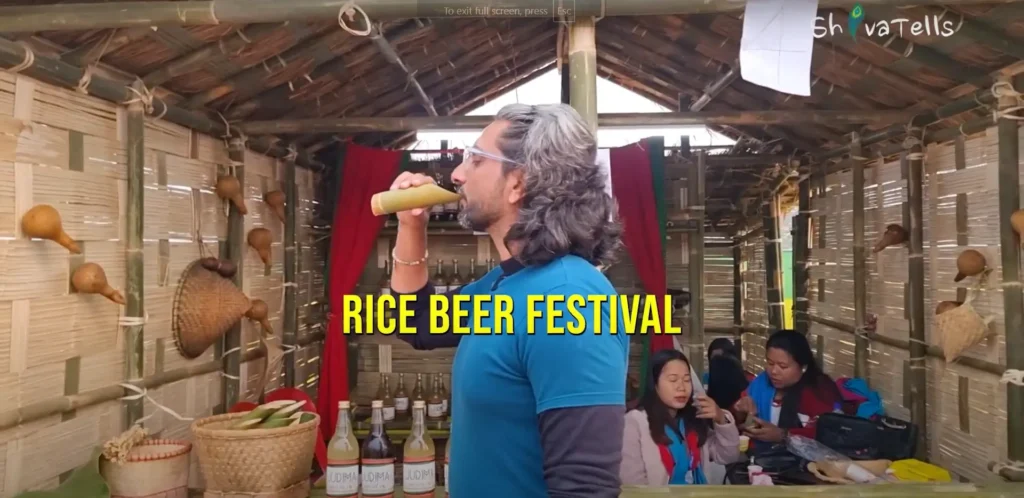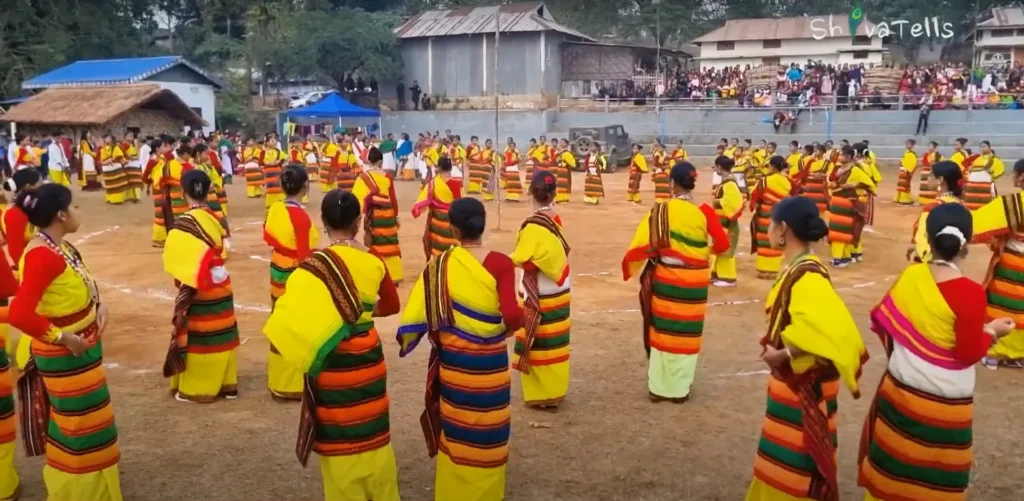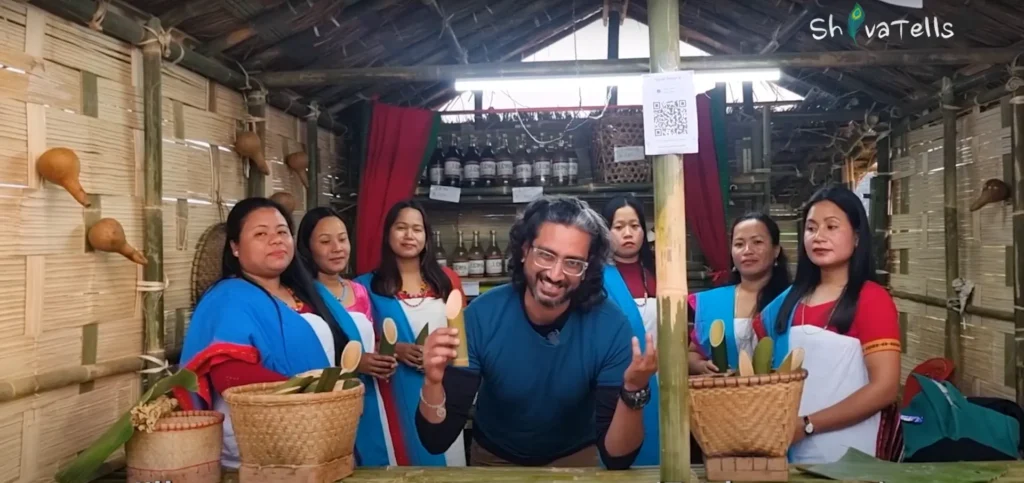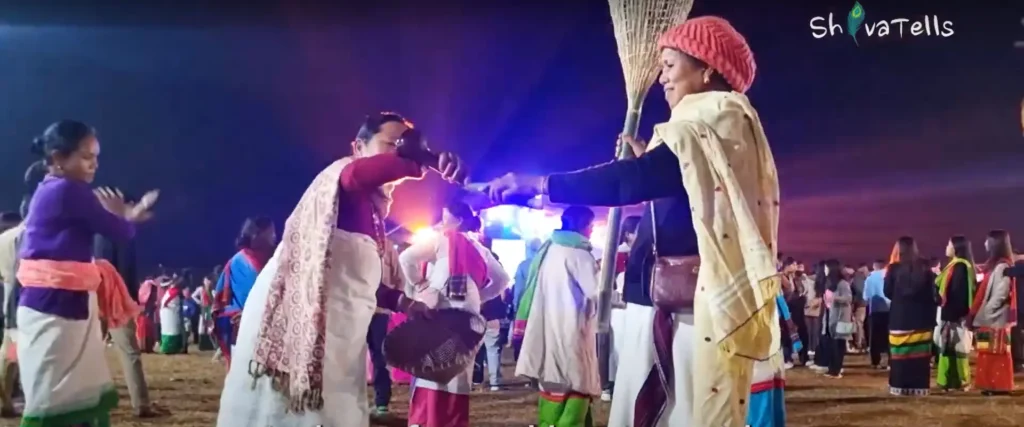What’s up jen amis (friends)! Shiva here, just landed (virtually, of course) with a story guaranteed to pique your interest! Ever heard of the Judima Festival? Na? Didn’t think so. This ain’t your regular ol’ beer festival, no sir. This one’s got roots deeper than a bhor tenga (elephant foot yam), bursting with tradition, culture, and enough judima (rice beer) to make your taste buds sing with joy. Sound interesting? Hold onto your japi (hats), because we’re about to set sail on a journey straight into the vibrant land of Dima Hasao!

Table of Contents
Sons of the Mighty Brahmaputra: The Dimasa Tribe
First things first, let’s talk about the folks who make this party possible – the Dimasa tribe. They call themselves the “sons of big waters,” a reference to the majestic Brahmaputra that nourishes their land. Back in the 16th century, they settled in Maibang, Assam, and embraced Hinduism, even becoming warriors (pretty cool, right?). Today, you’ll find them mostly in the Dima Hasao district, worshipping Lord Shiva in their own unique way.
Here’s the thing – Judima, the rice beer that the festival revolves around, is more than just a drink. It’s offered to their God, Shiva (Shibrai in Dimasa), a symbol of blessings on every important occasion – weddings, births, even funerals. A newborn baby is even given a few drops, considered a form of God himself!
The interesting part? Judima is the first local rice wine in Northeast India to get a GI tag (Geographical Indication). This basically means it’s one-of-a-kind, with a special recipe and brewing process unique to the Dimasa people.
The Judima Festival: A Celebration of Culture and Community

Now, onto the main event – the Judima Festival! This three-day extravaganza is a vibrant explosion of Dimasa culture. It all kicks off with a ceremony called “Hoshimba,” where villagers gather around the Kaabur’s house (a community leader) and let out a mighty shout. Talk about an energetic start!
But wait, there’s more! Here’s a taste of what you can expect:
- Dance like there’s no tomorrow: Be mesmerized by the “Baidema,” a traditional Dimasa dance performed with a unique flute called the “muri” and drums called “Karam.” You’ll also see other stunning dance forms from the Dimasa and neighboring tribes, making it a beautiful tapestry of cultures.
- A weaver’s paradise: Get ready to be amazed by the intricate handloom weaving techniques and the natural plant-based coloring processes that the Dimasa tribe is famous for. You might even get a chance to see these beautiful creations being made firsthand!
- Nightlife with a twist: As the sun sets, the mood changes. Popular bands take the stage, and everyone comes together to dance, sing, and have a blast under the starlit sky. Don’t worry, the Judima keeps flowing!
The Secret Behind the Brew: Judima – More Than Just Rice Beer
Here’s the thing about Judima – it’s not your average beer. It has different maturity levels, the older the better (just like a fine wine!). But what makes it truly special are the secret ingredients:
- Special herbs and rice: Unlike other rice beers, Judima uses a specific wild herb called “thembra” (climbing fig), known only to the Dimasa community. This adds a unique touch to the flavor.
- The magic of Pita: The starter cake used in brewing Judima is called “Pita,” and it’s another secret weapon. It’s what gives the beer its distinct character.
- Biring My Za: A rice fit for a king: Did you know there’s a special type of rice used just for making Judima? It’s called “Biring My Za,” and it’s not for everyday consumption. Now that’s dedication!
Women Power: The Backbone of the Judima Festival

Here’s a cool fact – Judima is primarily brewed by women in the Dimasa community. This festival isn’t just about celebrating culture; it’s about empowering these women. It’s a chance for them to showcase their skills and become financially independent.
The festival also creates a learning experience for everyone. You’ll see the older generation getting comfortable with technology, taking pictures and videos. It’s a beautiful coming together of tradition and the modern world.
Beer Festival Tips and Tricks: Make the Most of Your Judima Experience

Alright, so you’re sold! You’re ready to experience the magic of the Judima Festival. Here are some tips to make your trip unforgettable:
- Dress comfortably: Remember, this is a village festival, not a fancy soiree. Opt for breathable clothes and comfortable shoes. You’ll be dancing, exploring, and soaking in the atmosphere.
- Respect the culture: This is a traditional festival, so be mindful of local customs and dress modestly. It’s always a good idea to ask permission before taking pictures of people.
- Brush up on some basic Dimasa: Learning a few greetings like “Ariver Aave” (hello) and “Dhanyawad” (thank you) goes a long way. The locals will appreciate your effort to connect with their culture.
- Carry cash: ATMs might be scarce in these villages, so it’s best to be prepared with cash for any food, drinks, or souvenirs you might want to buy.
- Embrace the spirit of adventure: Be open to trying new things, be it the Judima (responsibly, of course!), the local cuisine, or participating in some cultural activities.
This isn’t just a festival; it’s a chance to immerse yourself in a unique way of life.
Beyond the Festival: Exploring Dima Hasao
While the Judima Festival is a highlight, Dima Hasao has so much more to offer. Here are some ideas to extend your trip:
- Trekking paradise: Dima Hasao boasts some breathtaking landscapes, perfect for trekking enthusiasts. Explore the Haflong Hills or conquer the Langting Margherita Eco Park, the highest peak in Assam.
- Waterfall wonders: Take a dip in the refreshing waters of the Langting Falls or the majestic Maibung waterfalls. The natural beauty of these places is simply stunning.
- Wildlife spotting: Dima Hasao is home to rich wildlife. Keep your eyes peeled for elephants, rhinos, tigers (if you’re lucky!), and a variety of birds in the lush greenery.
- Historical sites: Dive into history at the Kach Mahal ruins, remnants of a 17th-century palace. You can also visit the Mankulam caves, believed to be used by ancient hermits for meditation.
Dima Hasao is a treasure trove waiting to be explored.
How to Reach Dima Hasao?
Dima Hasao isn’t directly connected by air, but fret not! You can reach this hidden gem by flying into Guwahati or Silchar airports and then continuing your journey by road. Here’s how you can get there:
- By Air: Guwahati Airport (GAU) and Silchar Airport (IXS) are the nearest airports to Dima Hasao. From either airport, you can book a cab or taxi to Haflong, the headquarters of Dima Hasao district. The journey by road from Guwahati is around 333 kilometers and can take approximately 6-7 hours depending on traffic conditions.
- By Train: Dima Hasao has three railway stations around Haflong – Haflong Hill, Dolakhal, and Lanka. Several passenger and express trains connect Dima Hasao to other parts of Assam and neighboring states. You can check online booking platforms or inquire at your nearest railway station for train schedules and availability.
- By Road: Dima Hasao boasts a well-connected network of roads. You can easily find buses, both private and state-run, plying from major cities in Assam like Guwahati, Itanagar, and Tezpur to Dima Hasao. Buses are a budget-friendly option, and the journey offers a chance to soak in the beautiful Assamese countryside.
The Final Sip: A Festival That Stays With You
The Judima Festival is more than just a beer bash. It’s a celebration of a vibrant culture, a chance to connect with nature, and a window into the lives of the warm and welcoming Dimasa people. So, what are you waiting for? Pack your bags, grab your sense of adventure, and get ready for an unforgettable experience in the heart of Assam!
See you there!
Other stories from Assam
- This Man from Assam lives and loves ORCHIDS!
- Strange Indian TRADITIONS | Rare Turtles are offered in this TEMPLE of ASSAM
